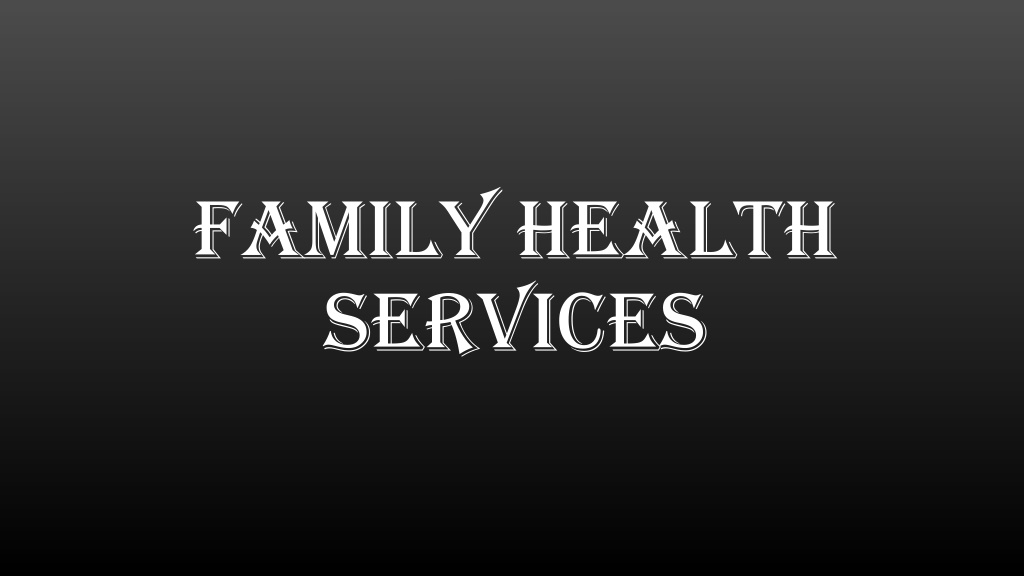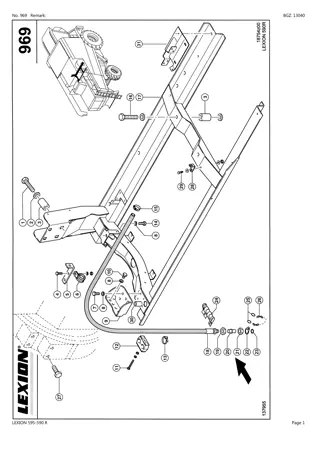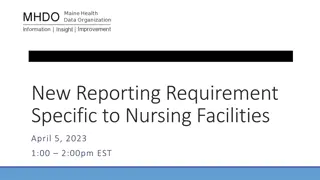
Understanding Family Health Services and Their Importance
Family health services play a crucial role in promoting the well-being of individuals within a community. These services encompass preventive, promotional, and rehabilitative care aimed at addressing the health needs of families. Through comprehensive care in areas such as family planning, nutrition, maternal and child health, and geriatric care, family health services contribute to reducing maternal and infant mortality rates, addressing malnutrition, and providing health education. Nurses involved in family health services prioritize building strong relationships with families, facilitating problem-solving, and promoting community engagement to achieve positive health outcomes.
Download Presentation

Please find below an Image/Link to download the presentation.
The content on the website is provided AS IS for your information and personal use only. It may not be sold, licensed, or shared on other websites without obtaining consent from the author. Download presentation by click this link. If you encounter any issues during the download, it is possible that the publisher has removed the file from their server.
E N D
Presentation Transcript
Family health services
Introduction Family health service are the central point of health services. It is an important component of health for all goal. Family health can be defined as continuing ability to meet defined function in interactions with other social, political, economical and health system
Definition Family health services can be defined as processing abilities and resources to accomplish family development tasks. It is a special attention which is given to family members to promote their health, prevent from health problem and for the welfare of family.
Concept Family is the basic unit of any health care system. Without family care services, the target of health services cannot be achieved. Family health services act as a problem solving process. Comprehensive health care (preventive, promotion and rehabilitative care) can be provided to community and family through health care services. Family planning, nutrition, maternal and child and geriatric care are the important aspect of family health services.
Objective of family health Nursing The broad objective of family health nursing are as under: 1. To identify health & nursing needs and problems of each family. 2. To ensure family understanding and acceptance of these need and problems. 3. To plan and provided health and nursing services with the active participation of family members.
Aims of family health services Reducing maternal mortality rate, maternal morbidity rate and infant mortality rate. Spacing the birth of children. Providing help in solving the problem of malnutrition in family. Provide health education to the family, so that they can lead a healthy and good life.
Principles of family health services Nurses should have friendly relations with every family and should encourage the families to have good relations with each other and in the community. It is essential to have the knowledge of all basic facts about the family e.g. its size, occupation, customs , rituals and education standard etc. Problem should be identified and assigned the priority level.
Conti Problems should be discussed with the family. For finding the solution of the problem, opinion of the family members should be considered. Co-operation of the family members should be obtained to implement the desired plan of action. At every contact/visit, a message should be given that is important from the point of vies of family health. Participation of family members is essential in family health nursing services.
ADVANTAGES Family health nursing of patients saves hospital beds that can be utilized for critical cases. Patient under family health nursing enjoys, privacy and emotional support. If the patient resides in a sanitary house, family health nursing is better than hospital nursing since he can control inimical environmental influences better.
DISADVANTAGES Family health nursing requires the nurses to carry portable laboratory machinery to the patient home. If the patient resides in a substandard house, family health nursing could delay his recovery.
FAMILY HEALTH NURSING PROCESS Family health nursing process is a orderly, systematic steps to assess the health needs, plan, implement and evaluate the services to achieve the health. It is the systematic steps to analyze health problem and their solution. It helps in achieving desire goals of health promotion, prevention and control of health problem.
Elements Of Nursing Process Delicious pie Implementatio Assessment Evaluation Diagnosis Planning n
QUALITIES OF FAMILY HEALTH NURSES FAMILY CENTERED APPROACH HOLISTIC APPROACH (WELLNESS) NON JUDGEMENTAL DURING APPROACH ACCEPTING DIFFERENT VALUES AND BELIEFS SELF AWARENESS ABLES TO WORK IN ADVERSES CONDITIONS FLEXIBLE SENSITIVE TOWARDS TIME AND EFFORTS
QUALITIES OF FAMILY HEALTH NURSES INDEPENDENT AND POSITIVE ATTITUDE SKILLFUL ABLE TO COPE AND MANAGE STRESS ABLE TO HANDLE SITUATION TERMINATE RELATIONSHIP WITH FAMILY
Information education communication
definition Information education communication can be defined as an approach which attempts to change or reinforce a set of behaviors in a target audience regarding specific problem in a predefined period.
Iec concept I-E-C Dynamics I Information, (facts, data(statistics) E- Education, (activated knowledge) C- Communication, (dissemination using various channels)
Aims To change the health behavior of individuals, family and community. To prepare background or basis for change in health behavior. To change the norms of the community. To Obtain social, political support for health activities. To facilitate education for audience about pubic health and create awareness in public opinion.
Scope or fields of IEC in relation to health Primary health care Prevention/control on communicable diseases. Reproductive health/maternal and child health services. Family welfare Nutritional services Personal hygiene
Approaches of IEC The approaches of IEC are based upon following fields or subjects. Diffusion theory Social marketing Behavioral analysis Anthropology Instructive design
infromation This consists of providing scientific knowledge to the people about the health problem and how to prevent them and promote and maintain health.
Education Health education can be defined as a process aimed at encouraging people to want to be healthy, to know how to stay healthy, to do what they can individually and collectively to maintain health and to seek help when needed.
Aims and objective To encourage people and health promoting life style and practices. To promote the proper use of health services available to them. To provide new knowledge, improve skills and change attitudes in making rational decision to solve their own problems. To stimulate individual and community self reliance and participation to achieve health development through individual and community.
Approaches to health education Regulatory Services approach Health education approach Primary health care approach
Principles of health education Interest Known to unknowns Participation Setting an example Motivations Good human relations Comprehension Reinforcement Feed backs Learning by doing Leaders.
communication The word communication is derived from latin work, communicare which means to participate, to inform, or impart. Communication can be regarded as a two way process of exchanging or shaping ideas, feeling and information.
Process of communication Source Encoding Receiver Decoding Channel
Types of communication One way communication Two way communication Verbal communication Non verbal communication Formal and informal communication Visual communication Tele communication and internet
Barriers of communication Physiological barriers Psychological barriers Organizational barriers Environmental barriers Cultural barriers
Iec Iec strategy strategy
Behavior changes communication (bcc) BCC can be defined as a process that motivates peoples to adopt and sustain healthy behavior and life styles.
Steps for bcc programme Analysis Strategic design Development and pretesting Implementation and monitoring Evaluation
Nurses responsibility in iec The nurse should consider the following points in health education. To gain confidence of people. To arouse the interest in people about good health. To motivate them to bring about changes in habits for healthy life. To prepare them for utilization of available health services.
Conti A friendly and cooperative feeling should be kept for health education. The opportunities for health education should be widely used. It is necessary to use appropriate audio visual aids to enhance the effect of health education. Health education should be planned and continuous.










